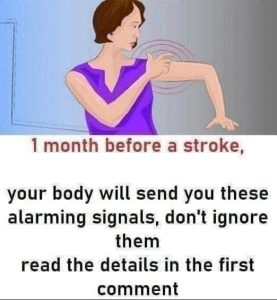In the United States, stroke ranks as the fifth leading cause of death and stands out as one of the most common reasons adults experience long-term disability. Although strokes can strike individuals of any age, women face a particularly high risk. According to the American Stroke Association, stroke is the third leading cause of death among women, with one in five women expected to experience a stroke in her lifetime. This statistic underscores the urgent need for awareness, especially when it comes to prevention and early recognition of stroke symptoms.

Often referred to as “brain attacks,” strokes occur when there is a disruption in the blood supply to the brain. These events generally fall into two primary categories. The first and most common type is called an ischemic stroke, which happens when a blood clot or other obstruction blocks blood flow to a portion of the brain. The second type is known as a hemorrhagic stroke, which occurs when a blood vessel in the brain bursts. This rupture may result from an aneurysm or an arteriovenous malformation—a tangled cluster of blood vessels prone to breaking.
In either type of stroke, parts of the brain can suffer damage or even die due to the lack of oxygen and nutrients. The effects can be catastrophic, leading to irreversible brain injury, severe disability, or even death. This is why immediate recognition and swift action are critical. Knowing the warning signs of a stroke can save lives, but recognizing the signs isn’t enough—it’s crucial to act quickly by calling 911 to ensure medical professionals can intervene without delay.
To help the public identify strokes as they happen, the Centers for Disease Control and Prevention (CDC) has highlighted five key warning signs. These signs typically emerge suddenly, and recognizing them can make all the difference. The first is sudden numbness or weakness in the face, arm, or leg, especially when it affects one side of the body. Second is sudden confusion, such as having trouble speaking or understanding others. Third, an individual may experience vision problems in one or both eyes. Fourth, difficulty walking, dizziness, loss of balance, or poor coordination can occur without warning. Finally, a sudden and severe headache may develop without any apparent cause. If you or someone nearby exhibits any of these signs, the situation should be treated as a medical emergency. Call 911 immediately.
Acting quickly can significantly reduce the damage a stroke inflicts on the brain. In fact, the urgency of seeking medical attention during an ischemic stroke cannot be emphasized enough. Experts stress that nearly 1.9 million brain cells die every minute a stroke goes untreated. That’s why time is absolutely critical. When a stroke happens, every second counts, and the quicker medical intervention begins, the better the chances for survival and recovery.
To help people remember how to respond in the event of a stroke, healthcare professionals use the F.A.S.T. acronym, which serves as a simple yet effective tool to identify and act on the signs of a stroke. “F” stands for facial drooping. If you suspect someone may be having a stroke, ask them to smile. If one side of the face droops or the smile appears uneven, it’s a warning sign. “A” is for arm weakness. Ask the person to raise both arms; if one arm drifts downward or feels numb or weak, that’s another indicator. “S” stands for speech difficulty. Have the person repeat a simple sentence to determine if their speech is slurred or strange. Finally, “T” means it’s time to call 911. Never attempt to drive yourself or someone else to the hospital during a stroke. Call emergency services so that trained personnel can begin treatment en route to the hospital. Early medical care has been proven to improve survival rates and reduce the risk of permanent disability.
It’s important to note that first responders are equipped to begin life-saving care even before arriving at the hospital. By initiating treatment as early as possible, they can preserve more brain function and increase the chances of a positive outcome. The window of opportunity for effectively treating stroke is narrow, so every minute saved matters.
While strokes can strike anyone, certain individuals are at greater risk. Age is a factor—your risk increases as you get older—but strokes are not limited to the elderly. According to the CDC, about one in seven strokes occurs in people aged 15 to 49. In other words, young adults and even teenagers are not immune. Additionally, gender plays a role. Women not only face a higher risk of stroke but are also more likely to experience severe outcomes.
Some risk factors are beyond your control, such as your age, gender, and family history of stroke. However, many risk factors can be managed or reduced through lifestyle changes and medical intervention. Smoking, obesity, physical inactivity, high blood pressure, and diabetes all contribute to increased stroke risk. By addressing these issues, individuals can take proactive steps to reduce their chances of experiencing a stroke.
Understanding your personal risk factors is the first step in prevention. Regular checkups with your healthcare provider can help you monitor your blood pressure, cholesterol levels, and other vital indicators of stroke risk. Managing chronic conditions, quitting smoking, maintaining a healthy weight, and staying physically active are essential strategies for protecting your brain health.
In summary, strokes are a serious health threat that require immediate attention. By learning to recognize the signs, acting fast, and managing risk factors, you can help protect yourself and your loved ones. Remember: time lost is brain lost. Your quick response could save a life—perhaps even your own.





